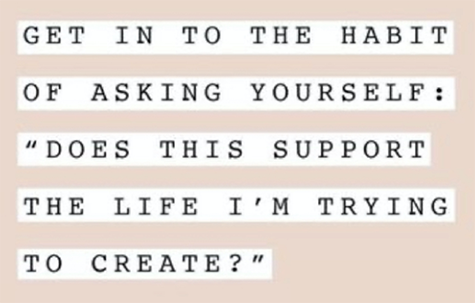BEHAVIOR CHANGE
Why is it so hard to implement behavior change, especially when we know that doing so would benefit our well-being?
In DBT, we often ask the question, “What is the function of this behavior?” In other words, what purpose does the behavior serve? This principle applies, even towards behaviors that we identify as ineffective, harmful, or maladaptive. We conduct chain analyses to help us understand what leads to and reinforces or strengthens the behavior. Whether the behavior falls under addiction, self-harm, or interpersonal ineffectiveness, we find the kernel of truth within the behavior. For example, substance use, though ineffective in the long-term, can provide immediate short-term gratification, such as relief, avoidance of suffering, and elevated mood. Hence, one of the reasons why change can be so challenging is that the function of the behavior can override all other factors.
Behaviors, particularly those that have been repeatedly practiced and automatized, get solidified via neural pathways. Habits become hard-wired in the brain. As the expression goes, “Neurons that fire together, get wired together.” Creating neural pathways when we execute novel patterns of cognitions, emotions, and actions require conscious and intentional effort. It may feel effortful to try something new when familiar pathways are much easier to access and fall back to.
Our environment contributes to reinforcement of old behavior patterns. The way we manage our emotions heavily depends upon our transaction with the environment. How people interact with us, what they say, and whether they validate us in turn impacts how we communicate and act towards others. Imagine a toddler verbalizing to their parent a need for attention. Initially, the parent ignores, dismisses, and invalidates the toddler. Only when the toddler starts screaming, crying, and threatening to engage in destructive behaviors does the parent begin to provide attention. In this example, we see how the behaviors of screaming, crying, and threatening to engage in destructive behaviors are reinforced because the parent attends to the toddler only when these behaviors are exhibited. When the toddler shows lower-level activation of affect (i.e., verbalizing the need for attention), that behavior is not reinforced and potentially gets extinguished.
An additional factor that makes it difficult to change behaviors is our attachment to them. In mindfulness, attachment is a principle that underlies human suffering. While it is human nature to cling onto the pleasure and avoid pain, the dialectic is that this human tendency also exacerbates human suffering. In the field of psychology, this pleasure-pain principle is what motivates and drives most behaviors.
In the spirit of DBT and raising self-awareness, we hope learning this information will ultimately inspire you to promote behavior change.
WORDS OF WISDOM

MEME OF THE WEEK

ACTIVITY
How to Adopt a New Healthy Habit | Collective Gen

CONTRIBUTE




